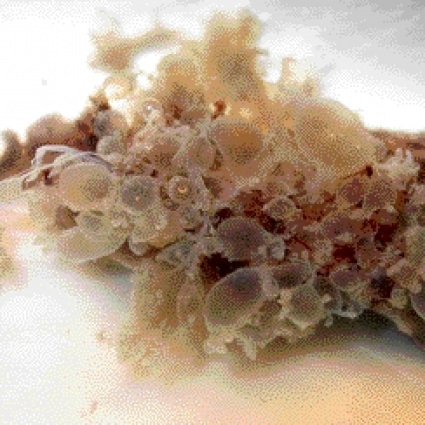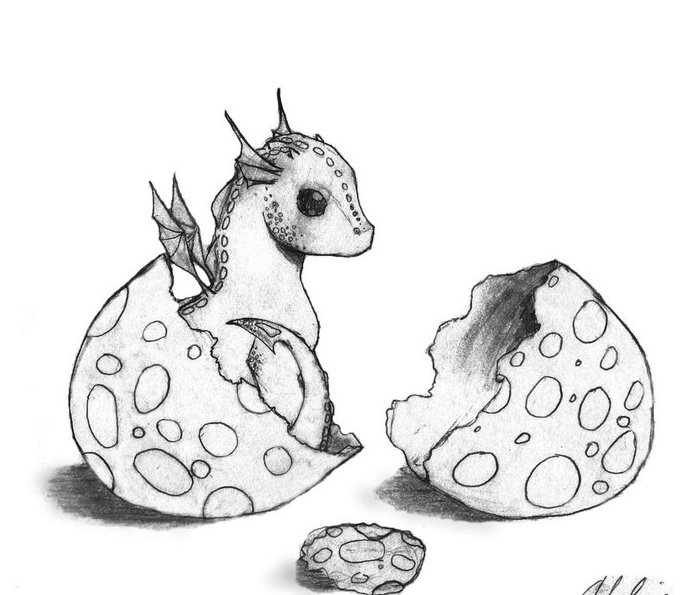One of the most mysterious Bosnian traditions is the one about the birth of snijet. Tabooed and of a holly status, this tradition existed in Bosnia for centuries, until today where it only exists in stories and sayings of older women. Some of them claim that they themselves gave birth to snijet or dragons.
The beginning of this tradition should be sought in the forefathers of the Bosnians, the ancient Illyrians who saw the snake i.e. dragon as a central animal of their national and also religious cult. In favour of this the ethnological records can be found among the Bosnians living in Montenegro and Albanians on Kosovo and Albania, lands that once made up the vast Illyrian empire. We also need to mention another tradition which is specifically connected to the Bosnian people and that is the one that mentions snakes entering and living inside humans who happened to fall asleep outside, in the field or under a tree. This clearly points to the ancient belief that snakes or dragons are directly connected to people and that physical permeations and mergers are possible.
Mola hydatidosa or infanticide The legend about dragons and their descendants which is called among the Bosnian folk snijet are an inalienable part of the fascinating world of mythology of this country which sometimes seems so real and tangible as in this sense. A long time before the twentieth century, when the ethnologists started gathering ethnological data around Bosnia and Herzegovina, among the Bosnian folk one could hear, through an oral tradition, a story that a woman gave birth to a snijet, a mysterious creature which was considered to be a baby dragon. Since the ethnologists never saw a birth of a snijet they concluded that this is a phenomenon which is called hydatidosa in medicine, a disease of the placenta where there are degenerative and proliferative process's in the placenta, specifically in the part that stems from the fetus.
However the medical explanation doesn't mention the possibility of mola hydatidosa and the child being born together or the possibility that the embryo develops into a fetus inside the diseased placenta. The same way, when we look at the pictures of mola hydatidosa from a layman's perspective, we quickly ascertain that the appearance and description of that disease have nothing in common with the claims made by the ethnologists during their field work. The only similarities to the medical claims are the accompanying symptoms of profuse bleeding after birth of the snijet, yet that phenomenon is common for most normal births, especially those in the past. Namely, up until the last few decades of the past century, most childbirths were done at home, individually or in the company of an experienced woman which is called a midwife, far from the hospital and the doctor.

In such completely unprofessional conditions the tradition about the snijet was misused and women and girls used it to hide abortions or the birth of deformed, retarded or extramarital children which they would kills right after birth. Since the snijet has been tabooed from its beginnings each infanticide went unpunished. If someone showed some interest for the childbirth the midwife would claim that "she had a snijet!" and that would stop any further discussion.
But, such criminal behaviour and attitude recorded in isolated cases is not a justified reason to cease the investigation about the snijet. Especially since the author of this text had the opportunity to meet an old lady who vividly described her experience of giving birth to a snijet, which leaves little room for doubt.
God's punishment or blessing? The ethnologists equated the word snijet to Ustilago maydis, because of the appearance, white colour and shaped like a corn parasite. However, in some places there is a different opinion based on the white colour of the placenta which uncommonly resembles an egg shell. The women usually described snijeti jaje i.e. carry down an egg. With this interpretation we are getting close to the mythological theory of the birth of a dragon, for which many legends claim that he actually came from a large egg.
There are a few versions of how a snijet is brought to this world. According to one of them if the woman has intercourse during her menstrual cycle, and a child is conceived, God will punish her for that blasphemy and she will give birth to a monstrous creation known as snijet. In the second version the woman is impregnated by a dragon, when he sees her resting somewhere in the field after work or when he visits her while she is sleeping. In a few ethnological publications we come across a few contradictions when it comes to the birth of snijet, namely, while some parts of BIH experience snijet as God's punishment, others don't see anything bad in it and claim that each Bosnian woman has given birth to snijet at least once in her life.
A woman can be pregnant with both a child and a snijet, which has catastrophic consequences for the fetus. There were cases that a woman gives birth to a child with a dead snijet on its head, after which the child would also die soon after. In the same way, if both are born alive, the folk belief is, that the child will die when the snijet is killed or when it dies.
The dread that a woman will give birth to a snijet appeared if the birth process took longer than usual. According to folk belief, snijet is delivered much harder than a normal child, the woman bleeds profusely and recovers slowly. Influencing the woman's psychological state depended on the climate, especially if she gave birth to a dead child. If the woman who gave birth to a snijet belonged to the part of the country that thought it was punishment from God, she would go into deep depression and psychological crisis, spending most of her days in bed. However if her surrounding saw snijet as a good thing (sevap) then her recovery would be much faster and her psychological state stable.
Snijet can be born along a child or by itself. If that happens in most cases the baby would be born dead or would die soon after birth. There were cases when the child survived but that happened only if the snijet didn't come to life inside the woman's womb. When the snijet is alive inside the womb, it then attacks the child and eats it, that's why the child is born with a deformity or disease. Apparently, the snijet bites and eats the child's head, arm, leg or bites it on its back "and eats its entire lungs while it is still in the mother's womb".
According to the confessions of women that gave birth to a snijet or that witnessed such an event, the child leaves the woman's body first followed by a snijet. Each woman, no matter the geographical location inside Bosnia, describe the snijet identically: "Snijet resembles a mole, it's the same colour and size, except it doesn't have any hair" or "Snijet mostly resembles a mole, it's black, has no hair on it, but everything else resembles a mole, the nose, body and legs". This description is also interesting: "it looks like a black piece of liver that has skin".
 Escape from the mother
Escape from the mother As mentioned earlier, snijet can be born by itself, or with a child, in a white placenta. If the pregnant woman is only carrying snijet in her womb, then her pregnancy doesn't last for nine months, but three to four. But, nevertheless, all through that short pregnancy she feels standard accompanying symptoms which are similar during normal pregnancy.
In most cases snijet was born alive and as soon as it came out of the woman, it showed strength and a developed instinct for survival, because according to the testimony of numerous women, "the moment it comes out it runs away from people, you can't catch it, it runs like a mouse and climbs walls". If the pregnant woman would give birth by herself, without anyone's help, which was frequent in the past, then the snijet escaped without much problems and later it transformed into a dragon.
According to the statement of an old lady from Žepa, who gave birth to two snijet besides her eleven children, sevap (good thing) is when someone gives birth to a snijet "it's as if the woman gave birth to two healthy children". The same lady said the following: "a woman who gives birth to a snijet three times, has all of her sins forgiven and after death she will go straight to heaven, that proves how happy God is when a snijet is born!"
Even though the birth of a snijet was tabooed for fear of judgement or ridicule of the environment, it was treated with respect, besides the fact it was killed, which can be seen in the fact that it was forbidden to throw a dead snijet into the garbage can, one needed to bury it wrapped in a cloth together with the placenta, under a young tree or farmyard manure. Behind such a rule one can see the human fear of a dragon retaliation because of the death of its cubs, therefore the wrapping inside a cloth and burying needed to hide such a deed.
